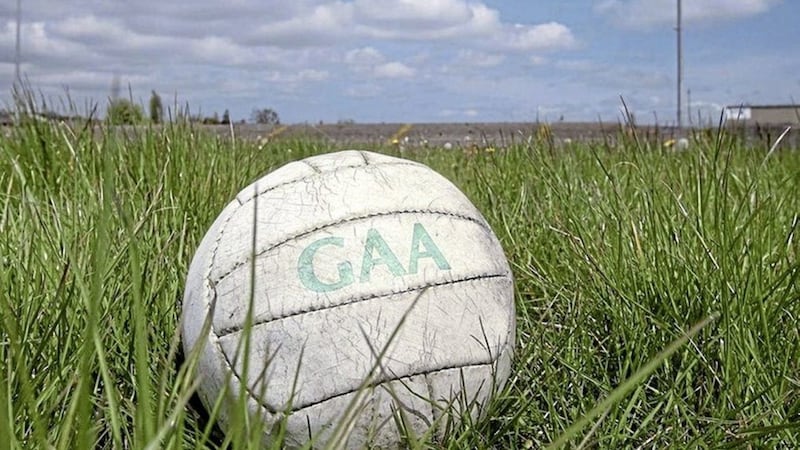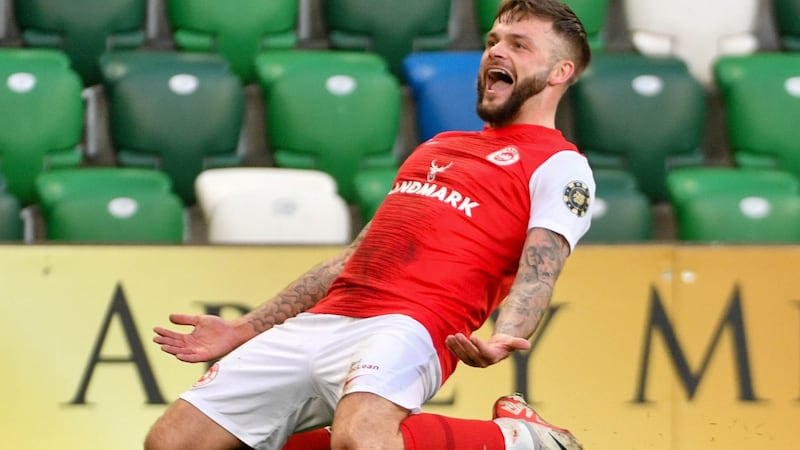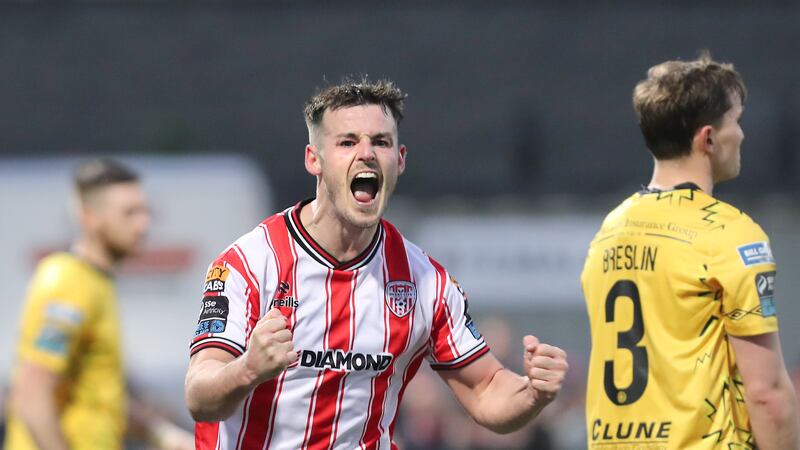ST PATRICK’S weekend has come and gone and another set of sporting heroes have been born.
The focus on this weekend by all sporting bodies signifies the importance attached to this time of the year. I remain of the view that should the GAA hierarchy move the club finals from this date, it will seriously damage the marketing and revenue earning potential of this occasion.
Worse still, it will strip away the significance of this occasion for those hundreds of players who, for 14 months, bust a gut for their one chance of playing in Croke Park on March 17. Young men like Oisin Smyth and Eoin McConville completed an outrageous victory for St Ronan’s, Lurgan over St Mary’s, Magherafelt in the MacRory Cup final. For these young men their future looks bright – and hopefully orange.
Success at this age is not only a tremendous platform for future sporting achievement, but it greatly improves self-esteem for educational and social attainment. The glory years of Armagh football from 1996-2008 were backboned by specialist coaching at St Colman’s Newry, the Abbey Grammar and St Michael’s, Lurgan. Great Derry teams prior to that were nurtured in the winning teams of St Patrick’s, Maghera.
Similarly, St Brendan’s College, Killarney have won back-to-back Hogan Cup titles and many of those same players have won All-Ireland minor titles for Kerry. Corofin have rightly put themselves among the greats of club football by outclassing Cork’s Nemo Rangers to claim their third Andy Merrigan Cup.
In 1998, Corofin won their first All-Ireland club football title six months before their county team won the Sam Maguire so the signs are good for Galway seniors.
The introduction of three to four proven winners into an improving set-up may give them the impetus to repeat the feat of ’98. Heroes such as Tadhg Furlong, Rory Best and Iain Henderson received international recognition as rugby Grand Slam winners and have acquired a unique gift of being able to bind communities of different religions, should they choose to put it into practice.
Their feats on the pitch have been extraordinary but the potential for greater societal good generated is a much greater challenge they should not shirk. To the IRFU’s credit they have always been mindful of the religious divisions in Irish society and met it head on by commissioning an Irish Rugby anthem to be sung after the Irish national anthem. This was an easy step for them as their traditional base is a protestant or middle class Catholic.
The GAA, IFA and FAI do achieve greater participation rates from working class areas of Ireland, north and south. But what about participation by foreign national kids? This appears to me to be a huge untapped resource, particularly in the GAA.
The 2016 Central Statistics Office figures show there are over 500,000 non-Irish living in the 26 counties, with a further 81,000 identified as being born outside the UK or Republic of Ireland living within the six counties according to 2014 figures from the Migration Observatory.
This equates to 12 per cent of the population of the 32 counties. Imagine for one second how much better Louth would be if it was able to recruit five quality players from the 10,000 non-Irish who live within its borders, or if Donegal, whose net migration continues to rise, could develop a defender or two from its 7,000 foreign nationals living between Killybegs, Gaoth Dobhair, Ballyliffin and every town in between.
The majority of nonnationals are European, Brazilian, Indian or American. These are all great sporting strongholds and they possess many physical attributes that don’t come so naturally to the Irish. For example, Americans tend to be taller whereas Brazilians are renowned for their silky skills and speed and the eastern Europeans have a voracious appetite for strength and conditioning.
There are isolated examples of children of non-Irish parents integrating into GAA teams and where this occurs, they are clearly welcomed and form a tight bond with the others. However, the numbers are too few to be significant.
Lack of integration into local sports is symptomatic of a wider societal issue. GAA columnists across Ireland have been asking for the GAA hierarchy, particularly the new president, to dust off their moral compass and to become a more principled organisation.
Isn’t it time for the hierarchy to actively encourage participation from all denominations and none, from people who have just arrived into our towns and cities and from those who have been living and working here for 10 years or more.
The children of these immigrants born here or reared are Irish. They will tell you that. Some even shorten their name or change their name to sound Irish. It is not good enough to embrace them when they turn up at training.
They need to be approached, cajoled and convinced their participation brings many social, economic, and health benefits for them and our organisation. St Patrick had to be a saint to return to Ireland after the way he was first treated as a slave.
The current wave of immigrants don’t want to be sainted, they just want to be treated as equals. It’s a simple principle.


